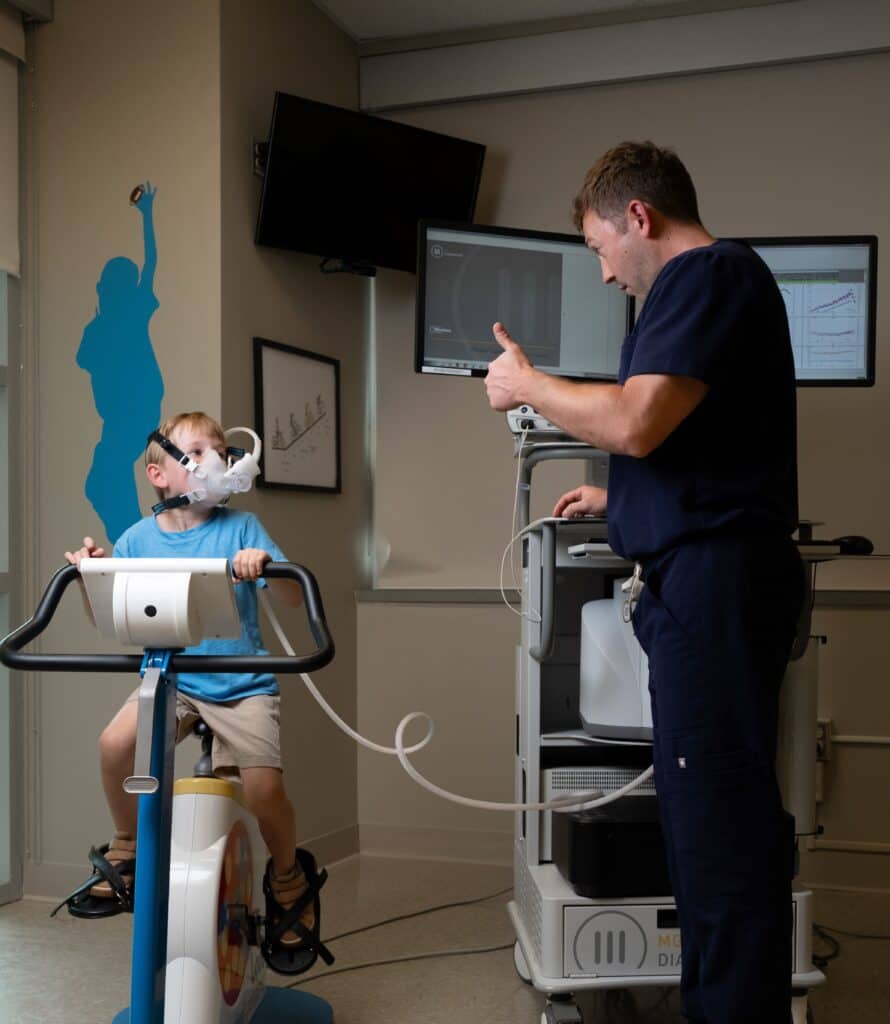Cardiorespiratory fitness is a key indicator of health. However, measuring peak oxygen consumption needed to determine cardiorespiratory fitness can be difficult to measure in children, who may not be able to, or willing to, push themselves and give a maximum effort during cardiopulmonary exercise testing. That’s why investigators at the ACNC explored if another measure, the oxygen uptake efficiency slope (OUES), could be used as an alternative metric for predicting peak oxygen consumption. In a post-hoc analysis of 94 kids, aged 7-10 years, investigators examined how well OUES predicted peak oxygen consumption when it was directly measured via an incremental cycle ergometer test. Using various equations to estimate OUES (including respiratory data and terms for age, sex, fat-free mass, and fat-mass) they applied simple and multiple linear regression analysis to predict peak oxygen consumption. Bland-Altman analysis assessed the level of agreement between OUES-predicted peak oxygen consumption and directly measured peak oxygen consumption. While there was no mean bias between directly measured peak oxygen consumption and predicted, the magnitude bias was present even after considering other significant predictors of peak oxygen consumption (fat mass index, fat-free mass index, race, and age) in the regression equation. Therefore, investigators caution that using OUES may not be accurate to predict peak oxygen consumption in children.

https://www.frontiersin.org/journals/physiology/articles/10.3389/fphys.2024.1358942/full
